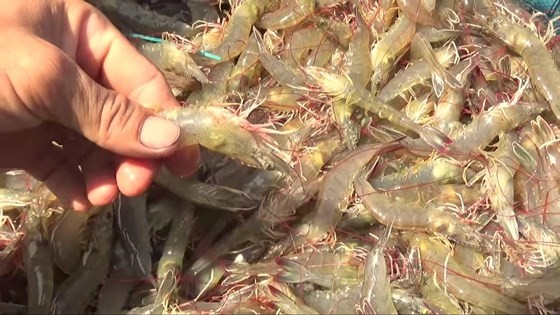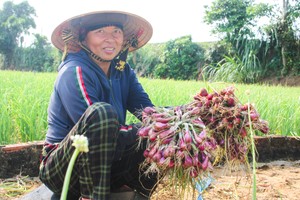
The Ministry of Agriculture and Rural Development on March 13 held a meeting to implement the plan for shrimp industry in 2019 in Soc Trang Province.
Report by the Directorate of Fisheries said that total brackish shrimp farming area exceeded 736,000 hectares last year, up 3 percent compared to the previous year. Of which, the area of tiger shrimps and white-leg shrimps reached 632,000 hectares and 104,000 hectares, up 3.2 percent and 1.4 percent respectively. Provinces, including Bac Lieu, Kien Giang, Tra Vinh and Soc Trang, saw an increase in the shrimp farming area.
The production of brackish shrimps exceeded 762,000 tons last year, up 6.3 percent over the previous year, of which production of tiger shrimps and white-leg shrimps reached 298,000 tons and 464,000 tons respectively.
The report showed that shrimp farming industry posted growth last year consisting of an increase of 3 percent in farming area and 6.3 percent in production compared to the previous year. However, the country’s shrimp industry saw exports of nearly $3.6 billion, down 7.8 percent.
Up to now, Vietnamese shrimps have not been able to compete with their rivals, including India, Thailand, Ecuador and Indonesia. Exports to some main export markets saw a decline, such as the EU 2.8 percent, the US 3.3 percent, Japan 9.2 percent, Taiwan 2.6 percent, and China and Hong Kong 28 percent.
At the meeting, some shortcomings and challenges of the country’s shrimp industry were pointed out. The country’s shrimp industry has not taken initiative in baby shrimp supply. Vietnam still has to import 200,000-250,000 parent white-leg shrimps every year, accounting for 90 percent of total parent shrimps.
The costs for shrimp farming are still higher than other countries, such as India, Thailand, Ecuador and Indonesia because of high shrimp feed prices which account around 65-70 percent in shrimp farming costs.
The situation of drug abuse and chemicals injection into raw shrimps still occurs at small farming and processing facilities which harms the prestige of Vietnamese shrimps.
Export of shrimps still faces barriers, including antidumping tax, the US’s Seafood Import Monitoring Program and competition from Indian shrimps. In addition, some markets, such as the US, the EU, South Korea and Saudi Arabia have increased control on quality and food safety.
The Directorate of Fisheries set shrimp export target of $4.2 billion this year. Accordingly, the current shrimp farming area will be maintained with production of 780,000 tons, of which production of tiger shrimps and white-leg shrimps is 300,000 tons and 480,000 tons respectively.
























